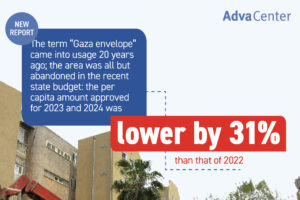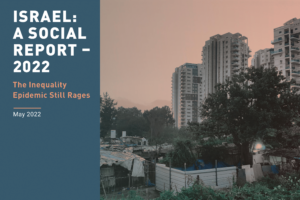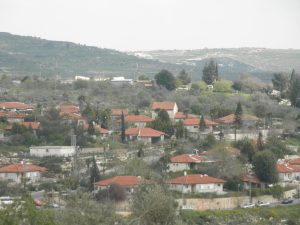The term “Gaza Envelope” came into usage 20 years ago. The area was all but abandoned in the recent state budget: the per capita amount approved for 2023 and 2024 was lower by 31% than that of 2022
“We were abandoned” is an expression repeated among the survivors of the October 7, 2023 Hamas slaughter at Israeli localities adjacent to the Gaza Strip (the so-called “Gaza envelope”). And that abandonment can be described as Israel’s retreat from many of its traditional obligations, including, in this case, the provision of security to all citizens and localities.
The following budget analysis is for local governments included in the “Gaza envelope,” whose definition entitles them to special allocations from the Ministry of the Interior. The relevant localities are the city Sderot, the regional councils Sha’ar HaNegev, Eshkol, Hof Ashkelon and Sdot Negev. The budget allocations presented below include assistance to be transferred, via the Ministry of the Interior, to the local tax base and other special grants, including development grants whose purpose is to strengthen the area. These allocations were instituted following Operation Protective Edge (July-August 2014). In the following graph, we present the total government budget transferred to the local governments via the Ministry of the Interior, in accordance with government resolutions.
Examining the national budget for the years 2023-2024 provides painful evidence that the localities in question were indeed slated for abandonment following the November 2022 elections. The total government allocation approved for the localities for 2023 and 2024, of NIS 99 million, is significantly lower than the budgets allocated and actually spent during the previous years. For example, for the years 2021 and 2022, those allocations amounted to NIS 140.5 and 137.8 million NIS, respectively.
Examining allocations transferred for the purpose of strengthening the localities of the “Gaza envelope” by budget per resident provides an even clearer picture. The following graph shows that between 2014 and 2022, the central government budget per resident was similar: NIS 1,579 at the beginning of the period and NIS 1,557 at the end. Recall that after Operation Protective Edge (2014) there were four more rounds of fighting. Despite this fact, the budgets approved for 2023 and 2024 are lower by 31% than that of 2022.
The figures show that The “Gaza envelope” area was defined following the rockets fired into it exactly 20 years ago, and it was all but abandoned in the government’s most recent budget. The per capita budgets approved for the years 2023 and 2024 are 31% lower than that of 2022. Thus, the state shrank the budgetary security blanket from the “Gaza envelope.”






